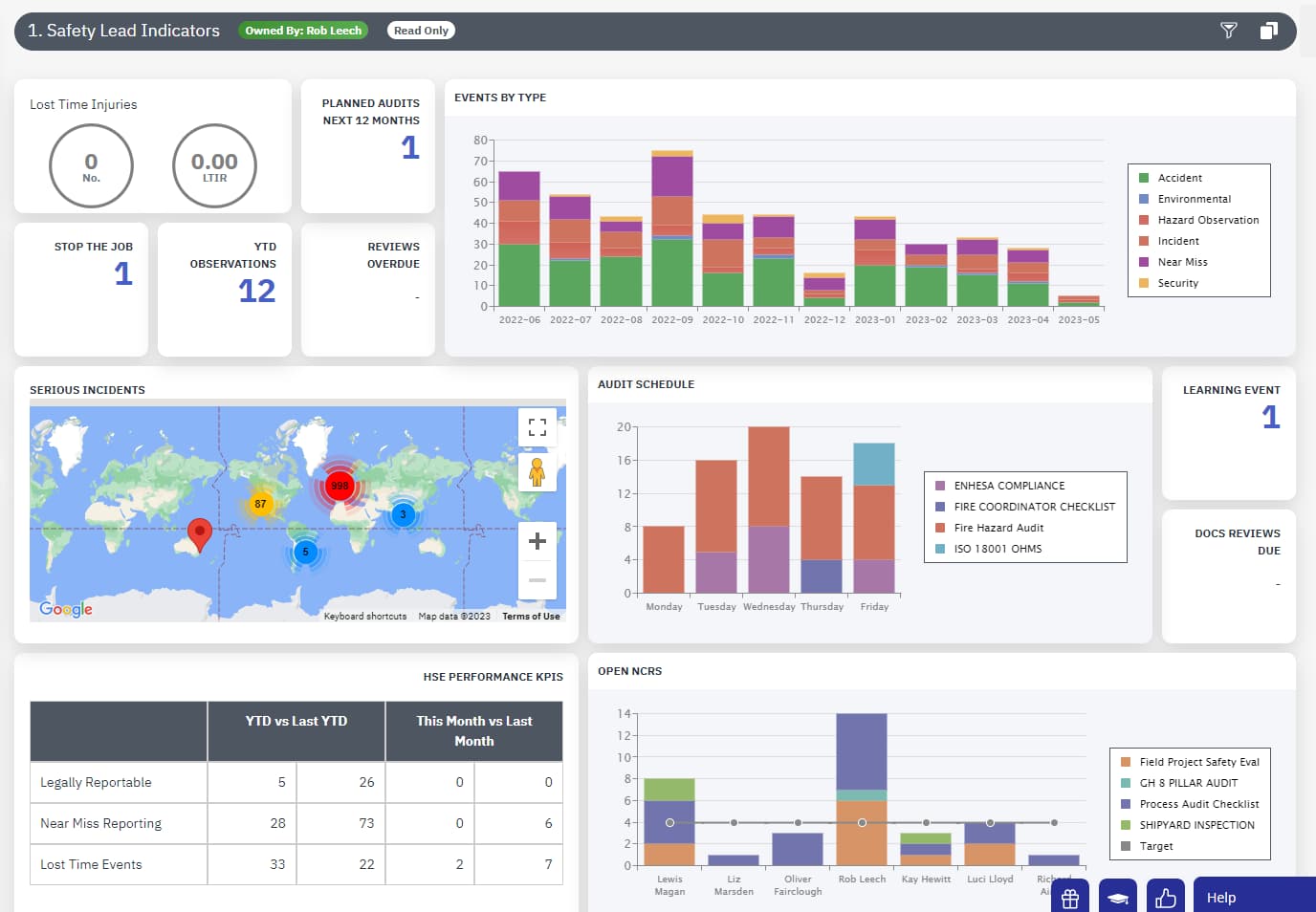History of workplace health and safety

- Working conditions during the Industrial Revolution
- The Factory Act 1802
- The introduction of factory inspectors 1833-1868
- The introduction of ‘duty of care’ in 1837
- Safety regulations increase from 1842-1878
- The Employer’s Liability Act 1880
- A continued increase in acts and reforms 1880-1973
- Health and Safety at Work Act 1974
- Health and safety news
- Latest health and safety regulations UK
- Technology for health and safety
Health and safety is hugely different now from when the concept first originated. Find out when workplace health and safety started to be taken seriously, and how it developed into the health and safety legislation we know today.
In today’s safety-conscious world, it is hard to imagine a time when the well-being of employees wasn’t a priority. But, in the not-too-distant past, health and safety was a new concept. In fact, it’s taken over 200 years to evolve into the laws and guidance we have today.
Nowadays, in many areas of the world, health and safety continues to improve year on year, with fatality and injury numbers gradually decreasing.
But health and safety wasn’t always a priority for businesses and legislators.
The health and safety legislation we see today has often been shaped by incidents that happened in the past.
In the UK, 28 fatalities at the Flixborough chemical plant in June 1974 was a catalyst for the formation of the Health and Safety Executive (HSE) and the introduction of the Health and Safety at Work Act 1974.
In the US, one of the most notorious incidents was The Triangle Shirtwaist Company fire in 1911, which killed 146 employees when they could not escape through locked doors. In the 1960s, 14,000 US workers were dying each year. In addition, 2.2 million were out of work due to injuries and illnesses. To tackle this crisis, in December 1970, President Nixon signed the OSH Act, which became law on April 28, 1971.
In Canada, the Hogg’s Hollow disaster of March 1960, where five workers were killed by a fire and explosion whilst installing a water main, sparked a public outcry. This prompted the Ontario government to modernize safety regulations, leading to the enactment of the Industrial Safety Act in 1964.
Let’s take a closer look at how these and other events have shaped workplace health and safety in the UK and worldwide.
CHAPTER 1
Working conditions during the Industrial Revolution
Before the Industrial Revolution began in 1760, it was the norm to make a living through agriculture or the making and selling of products from home. With new developments in machinery and manufacturing processes, Britain, followed by parts of Europe and the US, began moving towards a society fuelled by mass production and the factory system. Unfortunately, working conditions in the 1800s were poor.
People flocked to the cities for work where there were increased opportunities for employment in the new mills and factories. The vast number of people looking for work, and the need for cheap labour, led to poor pay, hazardous factory conditions and an increase in child labour. Hours were long and working conditions in factories were dangerous, with many losing their lives at work.
Work was particularly dangerous for children, who would work from as young as four, often for over 12 hours a day. Industrial Revolution workers used to climb under machinery, which would often result in the loss of limbs, while others were crushed or decapitated.
Girls working at match factories would develop phossy jaw from phosphorus fumes, children employed at glassworks were regularly burnt and blinded, while those working at potteries were vulnerable to poisonous clay dust. A lack of health and safety precautions also meant that many children developed occupational diseases such as lung cancer and died before the age of 25. regress, as employees will be afraid to report an unsafe incident leading to more hidden risks on site.

CHAPTER 2
The Factory Act 1802
An outcry over child labour conditions led to factory owner, Sir Robert Peel, introducing the Health and Morals of Apprentices Act 1802, commonly known as the Factory Act.
The Factory Act applied to all textile mills and factories employing three or more apprentices or twenty employees. The Act required factories to;
- Have sufficient windows and openings for ventilation
- Be cleaned at least twice yearly with quicklime and water
- Limit working hours for apprentices to no more than 12 hours a day (excluding time taken for breaks)
- Stop night-time work by apprentices during the hours of 9:00 pm and 6:00 am
- Supply suitable clothing and sleeping accommodation to every apprentice
- Instruct apprentices in reading, writing, arithmetic, and the principles of the Christian religion
While limited to a small portion of the workforce and with limited enforcement, the Factory Act is seen as the beginning of health and safety regulation.

CHAPTER 3
The introduction of factory inspectors 1833-1868
Workers, tired of spending over 12 hours a day in the factories, began a movement to reduce working days to 10 hours, known as the “Ten Hours Movement”. This pressure led to the formation of the Factory Act 1833.
The Act extended the 12-hour working limit to all children and included woollen and linen mills. Perhaps the most important development, however, was the introduction of factory inspectors. The inspectors were given access to the mills and granted permission to question workers. Their main duty was to prevent injury and overwork of child workers, but they were also able to formulate new regulations and laws to ensure the Factories Act could be suitably enforced.
Despite only four inspectors being appointed for 3,000 textile mills across the country, the inspectors were able to influence subsequent legislation relating to machinery guarding and accident reporting. A growing public interest in worker’s welfare, influenced in part by popular writers such as Charles Dickens, saw inspector numbers grow to 35 in 1886. The type of businesses they were able to enter also grew to cover most workplaces.

CHAPTER 4
The introduction of ‘duty of care’ in 1837
The first known duty of care case is that of Charles Priestly in 1835, who suffered several injuries after a wagon cracked and overturned due to overloading by his employer, Thomas Fowler.
Priestly spent nineteen weeks recovering at a nearby inn, which cost him £50 (a considerable amount at the time). Priestly sued Fowler for compensation relating to the accident, making this the first documented case of an employee suing an employer over a work-related injury. The jury awarded Priestley £100 in a landmark case which established the concept that employers owed their employees a duty of care.

CHAPTER 5
Safety regulations increase from 1842-1878
Several acts introduced over the next 36 years saw protection towards women and children strengthen. Women and children were prevented from working in underground mines, the use of child labour to clean and maintain moving machinery was stopped, and a 56-hour workweek for women and children was introduced.

CHAPTER 6
The Employer’s Liability Act 1880
The Employer’s Liability Act enabled workers to seek compensation for injuries resulting from the negligence of a fellow employee.
The Act states that any worker, or his family, are entitled to compensation for injury or death caused by a defect in equipment or machinery or negligence of a person given authority over the worker by the employer.

CHAPTER 7
A continued increase in acts and reforms 1880-1973
In light of increased industrialisation, and accelerated by two world wars, health and safety legislation continued to flourish, with several Acts and reforms improving upon health and safety regulation across the country. Employers were required to provide safeguarding for machinery, the legal working age was gradually raised, and more inspectors were appointed across industries.
1878 also saw the first safeguarding put in place for those working in the agriculture industry, regarding equipment, machinery, and poisonous substances.

CHAPTER 8
Health and Safety at Work Act 1974
In 1970, the Employed Persons (Health and Safety) Bill was introduced in the UK. However, the debate around the bill generated a belief that it did not address fundamental workplace safety issues. A committee of inquiry was established, and in 1974 the Health and Safety at Work Act was passed.
The Health and Safety at Work Act 1974 was a revolutionary piece of legislation that forms the basis of health and safety legislation across the world today.
Unlike previous acts in the UK, the Health and Safety as Work Act encompassed all industries and employees. The Act places responsibility on both the employer and employee to ensure the health, safety, and well-being of individuals across all workplaces, and members of the public who could be affected by work activities.
The act also led to the creation of the UK’s Health and Safety Executive (HSE), which was put in place to regulate and reinforce UK legislation. Health and safety legislation continued to expand into the 90s, with the introduction of the Workplace Regulations 1992, which focused on basic health, safety, and welfare issues such as ventilation and cleanliness, and the Workplace Health and Safety Regulations 1999, which further clarified employer responsibilities.
Improvements in safety standards because of these legislations saw an incredible 73% reduction in the number of workplace fatalities between 1974 and 2007. Non-fatal injuries also fell by 70%.


CHAPTER 9
Health and safety news
The Health and Safety at Work Act 1974 still forms the basis of workplace safety law in the UK and went on to influence legislation in Europe, New Zealand, and other parts of the world. While the principles have largely remained the same, the Act continues to see updates and reforms as the workplace evolves and new health and safety challenges arise.
Following the coronavirus outbreak and the subsequent lockdowns across the globe, coronavirus health and safety became a hot topic. For the first time, in March 2020, the HSE released new guidance aimed at employers to encourage them to consider the safety of home workers. With the shift to home working and the rise in lone and remote workers across the globe, employers need to consider how they adapt to these new circumstances and continue to uphold their duty of care.
Businesses today are keener than ever to create a positive safety culture in the workplace, with enhanced safety measures boosting productivity and profits, as well as keeping staff safe. With both employers and employees taking more responsibility for health and safety, employers are also continuing to invest in health and safety training, with one study indicating that the average company today spends $1,111 (£915) on training, per employee.

CHAPTER 10
Latest health and safety regulations UK
The UK has some of the most comprehensive health and safety laws and requirements in the world. The laws in place in the UK have influenced legislation in many other countries.
Some of the health and safety regulations in force in the UK today are:
- The Regulatory Reform (Fire Safety) Order 2005
- Health and Safety at Work Act 1974
- Workplace (Health, Safety and Welfare) Regulations 1992
- The Health and Safety (Display Screen Equipment) Regulations 1992
- The Personal Protective Equipment at Work Regulations 1992
- The Manual Handling Operations Regulations 1992 (amended in 2002)
- RIDDOR (Reporting of Injuries, Diseases and Dangerous Occurrences Regulations 1995)
- The Provision and Use of Work Equipment Regulations 1998 (PUWER)
- The Working Time Regulations 1998
- Management of Health and Safety at Work Regulations 1999
- COSHH (Control of Substances Hazardous to Health) 2002

CHAPTER 11
Technology for health and safety
Rising global access to the internet and rapid developments in technology have made managing health and safety in the workplace more efficient than ever before. Health and safety systems like smartphone apps are revolutionising how we keep staff safe, especially those who work alone. In fact, according to a new research report from Berg Insight, the number of lone workers using connected safety solutions in Europe and North America is expected to reach 1.8 million by 2025.
EcoOnline’s lone worker app and cloud-based monitoring hub is used by businesses around the world to protect their staff whilst they work alone. Our Lone Worker Solution gives employers real-time information about staff locations and features a range of alerts, including panic, missed check-in, and fall detection to ensure that lone employees get the help they need in an emergency.













